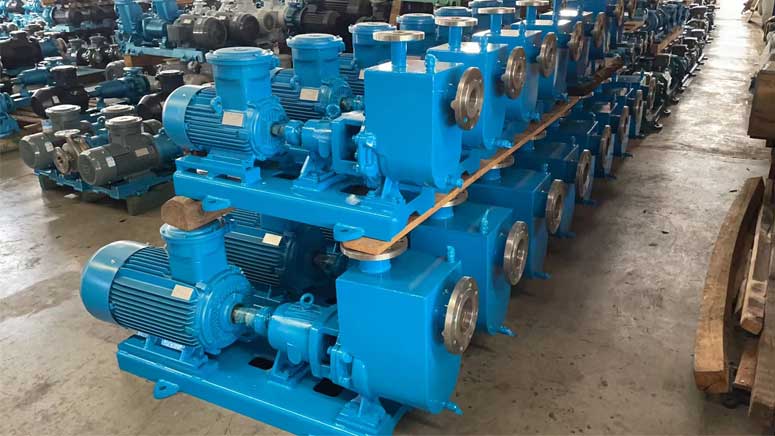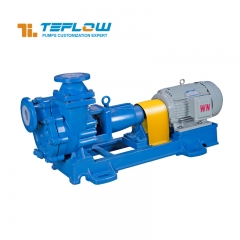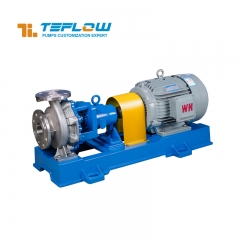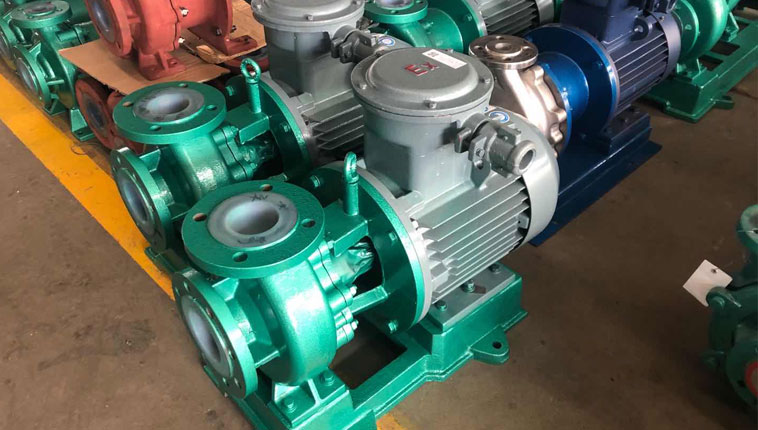Stainless steel self-priming pumps play a vital role in various industrial and residential applications, offering reliable fluid transfer solutions. However, like any mechanical equipment, they are prone to encountering issues over time. Understanding the common failures and their troubleshooting methods is crucial for ensuring the smooth operation of these pumps. Below, we outline some of the typical problems associated with stainless steel self-priming pumps and their remedies:
Ⅰ.Loss of Prime:
Issue: Loss of prime occurs when the pump fails to maintain suction, resulting in air entering the system and interrupting the pumping process.
Troubleshooting: Check for leaks in the suction line, inspect the foot valve for debris or blockages, and ensure the pump casing is adequately filled with liquid before starting.
Ⅱ.Cavitation:
Issue: Cavitation occurs due to the formation of vapor bubbles in the pump impeller, resulting in noise, vibration, and potential damage to pump components.
Troubleshooting: Increase suction pressure, reduce discharge pressure, or adjust the pump speed to mitigate cavitation. Inspect the impeller and casing for wear or damage.

Ⅲ.Overheating:
Issue: Overheating may occur due to prolonged operation at high temperatures or inadequate lubrication, leading to seal failure or motor damage.
Troubleshooting: Check for proper lubrication of bearings and ensure adequate cooling of the pump motor. Reduce the operating temperature if necessary and inspect for any blockages in the cooling system.Ⅳ.Seal Leakage:
Issue: Seal leakage can result from wear and tear, improper installation, or inadequate sealing, leading to fluid leaks and potential contamination.
Troubleshooting: Inspect the seals for damage, misalignment, or insufficient tightening. Replace worn-out seals and ensure proper installation according to manufacturer specifications.
Ⅴ.Motor Failure:
Issue: Motor failure may occur due to overload, electrical issues, or mechanical problems, resulting in pump downtime and reduced efficiency.
Troubleshooting: Check electrical connections, voltage levels, and motor winding resistance. Inspect for any signs of mechanical damage or overheating, and replace or repair components as necessary.
Ⅵ.Reduced Flow Rate:
Issue: Reduced flow rate can be caused by blockages in the suction or discharge lines, worn-out impeller, or air entrainment.
Troubleshooting: Clear any obstructions in the suction or discharge lines, inspect the impeller for damage or wear, and ensure proper venting of the system to prevent air entrainment.
By promptly identifying and addressing these common failures, operators can maximize the reliability and longevity of stainless steel self-priming pumps, minimizing downtime and maintenance costs. Regular inspection, maintenance, and adherence to manufacturer guidelines are essential practices for ensuring optimal pump performance.





 +86 18130251359
+86 18130251359 teflowpumps@tlpumps.com
teflowpumps@tlpumps.com











 +86+0563-5093318
+86+0563-5093318
